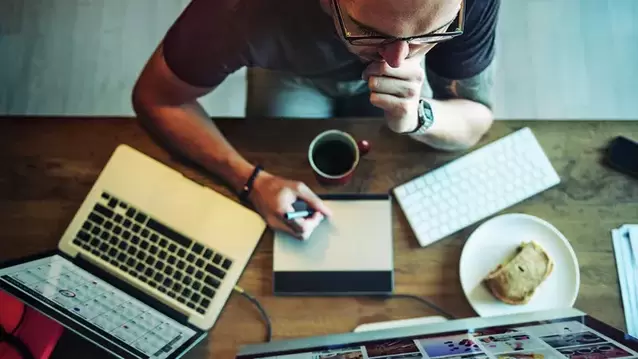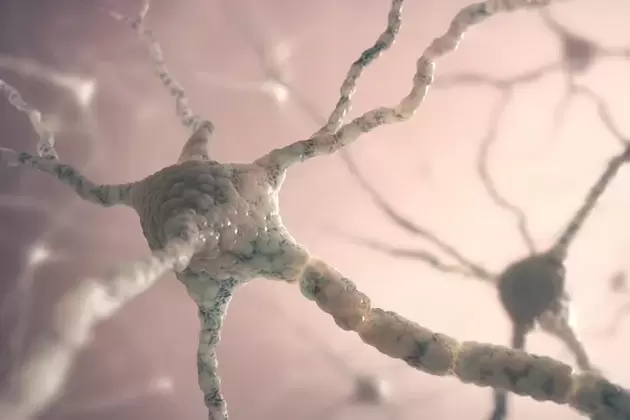
A good memory and a sharp mind are not innate human talents, but skills that can be developed and taught by children and adults alike. For this, there is a set of special exercises and methods aimed at improving brain activity and synchronizing the work of the cerebral hemispheres.
The human brain and memory training
Like the body, the brain needs exercise. Many tasks that were previously used to create new neural connections gradually become routinized and reduce the brain's ability to focus and concentrate on new things. The reason for this is the disruption of interhemispheric interaction and their lack of equivalent development.
A person's desire to learn new things, which creates new neural connections, helps to normalize the functioning of the brain. However, the lack of "nutrition" for the brain slows down the learning process due to the deterioration of memory, lack of quick reaction and creative thinking.

An effective way to restore and improve mental and cognitive abilities is to do special exercises to train the brain. Daily exercise helps improve brain activity and ultimately cognitive abilities, which include thinking, memory, speech, perception, imagination, and attention.
Benefit
What are the benefits of gymnastics for the brain:
- concentration and reaction speed increase;
- memory improves;
- emotional resistance to negative factors increases;
- coordination of movements improves;
- has more energy to perform daily tasks;
- hidden abilities of the brain are revealed;
- sleep quality improves.
Brain gymnastics is often prescribed by psychotherapists to treat neuroses, depression and emotional exhaustion. Exercise helps you get rid of negative thoughts, distract you, and restore a person's productivity.

Features
From infancy to adulthood, you need to train your brain throughout your life. In principle, gymnastics to improve memory and brain activity is the same for both children and adults, but it has a number of features.
In adults
Anyone over the age of 20 can experience forgetfulness, poor spatial orientation, and a general decline in performance. Common causes include bad habits, poor sleep, and an irregular work schedule that overloads the brain with too much information. To normalize the activity of the brain and restore the sharpness of the intellect, you need to reconsider your lifestyle, be physically active, rest and devote 5 minutes a day to thematic exercises.
Also, adults should not forget about brain development methods for children - fine motor skills exercises, learning poetry, retelling, etc.
In children
The degree of development of interhemispheric connections determines the child's academic performance, correct coordination of movements, communication with peers, speech quality and emotional intelligence. The development of new neural nodes should begin at the age of 2-3 years, when the child's brain absorbs more energy than the brain of an adult.
The main and popular way to develop the brain in children is educational games that combine activities to develop hand-eye coordination, concentration and motor skills. In addition, it has a positive effect on the equal development of the cerebral hemispheres:
- finger gymnastics;
- breathing exercises;
- logarithmic;
- listen to music;
- dance;
- read and repeat what they read;
- creativity: modeling, painting, knitting, etc. ;
- self massage;
- kinesiological exercises;
- didactic games: comparing objects, guessing an object according to the description, etc.
All this helps to build healthy self-esteem and improve interhemispheric interaction, which affects the child's success. And the desire to learn new things can become a useful habit for a child that will help him throughout his life.
How to improve memory
Memory is closely related to other cognitive abilities that need development. Therefore, it is necessary to take a comprehensive approach to its development, do special exercises and change your daily life using other interesting ways that we will consider later.
The best exercises
Lessons should be conducted in a quiet environment. The duration of the exercise is from 5 to 20 minutes. It is also important to increase the number of repetitions and make the exercises more difficult by adding additional gestures, movements and sounds.
For the brain
The following neurogymnastics exercises were developed by American psychologists Paul and Gayle Dennison based on educational kinesiology.
Exercise 1. "Brain Buttons"
Exercise helps the brain to "start" and adapt to work.
- Stand straight, back straight.
- One hand massages the depressions between the first and second ribs on the left and right under the collarbones. The other hand is placed on the navel, which allows you to focus on the center of gravity.
Exercise 2. "Hooks"
- Take any comfortable starting position: standing, sitting or lying down, crossing your ankles.
- Extend your arms forward, interlace your palms and interlace your fingers.
- Turn your arms inward at chest level with your elbows pointing down.
- Return to the starting position. Repeat 8-10 times.
Exercise 3. "Knee-elbow"
- Starting position: standing.
- Lift your left leg from the knee and bend it.
- Touch the knee of your left leg with the elbow of your right hand. Then repeat the movement with your right leg and left hand. Do 8-10 repetitions.
Exercise 4. "Elephant"
- Starting position: standing, in a comfortable position. Knees slightly bent.
- Tilt your head towards your shoulder. From this shoulder, extend your arm forward like a torso and draw a horizontal figure eight, starting from the center of the field of vision, upwards and counterclockwise. Important: the eyes follow the movement of the fingertips.
Perform the exercise by slowly pressing your left hand to your left ear 3-5 times and your right hand to your right ear the same number of times.
Exercise 5. "Mirror painting"
- Take a marker or pencil in both hands.
- Mirror - write numbers, letters, etc. on paper with both hands at the same time. draw
Additional exercises for maximum involvement of the brain:
- "Fist palm. "Extend both arms in front of you. Squeeze the fingers of your left hand into a fist, straighten your right. Then, sequentially change the position of your fingers, gradually speeding up your movements.
- "The winner". The fingers of one hand make a "V" gesture and the other makes an "OK" sign. Alternate hands, gradually increase speed.
- "Horns and feet. "One side shows the horns, the other shows the feet (thumb, index and middle fingers). Alternate hands, gradually increase speed.
- On one hand, connect the thumb with all the other fingers in sequence, starting with the index. Do the same with the other hand, but start with the little finger. Practice with both hands at the same time.
- "Puzzles". On the one hand, bend all the fingers, except for the index and middle fingers, on the other - except for the ring and little fingers. Connect them like puzzles. Change hands, gradually speed up the movements.
For memory
Simple and effective exercises to improve memory:
- Route map.Map your route to work. Try to remember everything down to the smallest details: the names of streets, metro stations, bus stops, shops you meet on the way.
- Alphabet.Quickly find words for each letter of the alphabet.
- Magician.For this exercise you will need a deck of playing cards. Shuffle and remember the sequence of the first 3-5 cards from the deck. Shuffle the deck and find these cards.
- Carbon copy.Find any picture on the Internet or take a banknote. Study the picture for a minute and draw what you see from memory on a piece of paper. Then compare the drawing to the original to identify missing details.
- Remember a school poem or learn your favorite songs. Also great for memory training.
- Before going to sleep, remember the people and objects that surround you. If you attended the lecture, try to reconstruct all the material in your head.
- Take something. Check it out in detail in a minute. Then go off topic and try to describe it by writing a detailed review.
Other methods
In addition to special exercises, there are other useful ways to activate the brain and improve memory:
- Always learn new things.Minimal load on the brain and lack of new information lead to deterioration of memory and other cognitive abilities. Also, focusing on something unrelated to your work helps to develop stress resistance. The best options are learning foreign languages, online courses, crafts, etc.
- Play mind games, solve crosswords, puzzles. This will help keep your mind clear and broaden your horizons.
- Get out of your comfort zone.For example, choose a different way to work, take up a hobby that you are afraid of, actively meet and communicate with people in real life.
- Be busy at the same timeboth hemispheres of the brain. Brush your teeth, eat, open the door, grab the handle with your non-dominant hand.
- Read, write by hand.Reading trains memory, activates imagination and creative thinking. Handwriting is a great way to develop motor skills.
Being able to relax is equally important. Avoid insomnia and learn to meditate. The brain needs rest and relaxation.
Products for memory and brain development
It is important to watch your diet to keep your brain active. A healthy daily diet should consist of proteins, healthy fats and complex carbohydrates. You can also include the following products that support brain activity in the menu:
- Oily fish.A source of Omega-3 polyunsaturated fatty acids, which affect the active saturation of brain cells with oxygen and nutrients.
- Bitter chocolate.Chocolate containing 70% cocoa slows down age-related mental decline and prevents cognitive impairment.
- Egg. Egg yolks contain choline, which is used by the body to make the neurotransmitter acetylcholine, which is responsible for memory and mood.
- Whole grain breads and cereals.Cereals improve metabolism, fill you with energy and improve blood circulation in the brain thanks to the vitamin B6 they contain.
- Tomato.A source of melatonin, which prevents the aging of brain cells and improves the condition of blood vessels.
It is also important to maintain fluid balance by drinking enough drinking water every day for active brain activity.
Prevention
Essential for a clear mind, good memory and active brain function:
- Get rid of bad habits.Smoking, alcohol and psychotropic substances disrupt blood circulation in the brain, causing oxygen starvation and death of neurons.
- to walkDaily walks saturate the brain with oxygen and help develop concentration and memory.
- Exercise.Physical activity improves blood circulation, helps to improve memory, coordination of movements and improves health.
- Give it to the brainunit loadand don't forget about rest.
- Practice good sleep hygiene.Sleep at least 7-8 hours. Sleep is necessary for the brain to rest, strengthen the necessary ones and destroy unnecessary nerve connections.
The most important thing is to exercise daily. Only regular exercise will give you the desired result.







































































